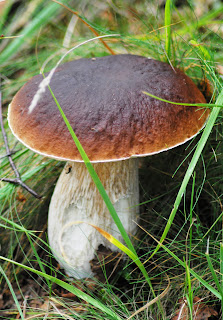Two days from retirement and I have just returned from the annual Swansea field course that takes in locations reached from the Island of Portland (with Chesil Beach). Saw Turnstone (Arenaria interpres) on Chesil Bank. At Abbotsbury Swannery got to hold a Mute swan (Cygnus olor) for the last time. Radipole RSPB reserve had massed cormorant on the little island. At Broadcroft Butterfly Quarry got a nice shot of a basking Speckled wood (Pararge aegeria) and found a Slow worm (Anguis fragilis). In addition to the primates, there were masses of fungi at Monkey World including Fly agaric (Amantia muscaria) and Boletus edulis (guess which one should eat!). Brownsea Island was special with Greenshank (Tringa nebularia) and Redshank (Tringa totanus) in the lagoon with a massed flight of Spoonbill (Platalea leucorodia), Avocet (Recurvirostra avosetta) and other species above it. There were also Leccinium scabrum fungi there and a good show by the Red squirrel (Sciurus vulgaris).
This blog may help people explore some of the 'hidden' issues involved in certain media treatments of environmental and scientific issues. Using personal digital images, it's also intended to emphasise seasonal (and other) changes in natural history of the Swansea (South Wales) area. The material should help participants in field-based modules and people generally interested in the natural world. The views are wholly those of the author.
Tuesday, 28 September 2010
Highlights of a Last Dorset Field Course?
Two days from retirement and I have just returned from the annual Swansea field course that takes in locations reached from the Island of Portland (with Chesil Beach). Saw Turnstone (Arenaria interpres) on Chesil Bank. At Abbotsbury Swannery got to hold a Mute swan (Cygnus olor) for the last time. Radipole RSPB reserve had massed cormorant on the little island. At Broadcroft Butterfly Quarry got a nice shot of a basking Speckled wood (Pararge aegeria) and found a Slow worm (Anguis fragilis). In addition to the primates, there were masses of fungi at Monkey World including Fly agaric (Amantia muscaria) and Boletus edulis (guess which one should eat!). Brownsea Island was special with Greenshank (Tringa nebularia) and Redshank (Tringa totanus) in the lagoon with a massed flight of Spoonbill (Platalea leucorodia), Avocet (Recurvirostra avosetta) and other species above it. There were also Leccinium scabrum fungi there and a good show by the Red squirrel (Sciurus vulgaris).
Subscribe to:
Post Comments (Atom)
It's All Downhill Now
The snowline is climbing in the French Alps. This has resulted, thus far, in the closure of 186 ski resorts. This figure is like...

-
I n the UK and US, a pparently popular and successful vegan/vegetarian restaurants are reportedly closing or adding meat to their menus ( ...
-
Early ripening fruit may seem convenient but some folk think it confirms environmental stress. There's also a possibility th...


,+Little+egret+(Egretta+garzetta)++etc+in+flight+Brownsea+Island.JPG)
+near+tern+island+Brownsea.JPG)
+dips+beak+in+lagoon+Brownsea.JPG)

+toadstool+Monkey+World.JPG)
+in+Bug+bottle+Broadcroft.JPG)


+walk+on+Chesil+Bank.JPG)

%20mating%20NWCW.jpg)


No comments:
Post a Comment